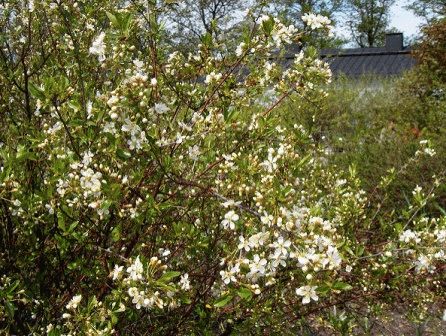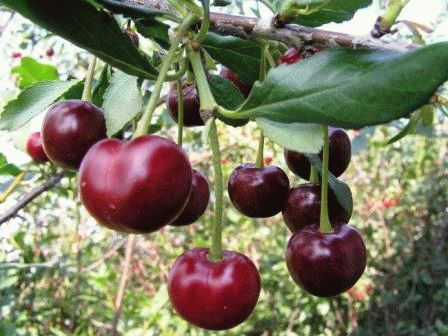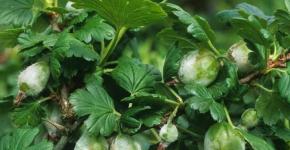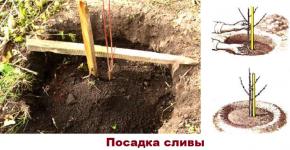Cherry steppe (bush). Varieties and cultivation
Steppe cherry is photophilous, drought-resistant, undemanding to the soil. Even on poor and stony lands it gives a harvest. Weakly susceptible to diseases and pests. Decorative due to lush early flowering and an abundance of bright shiny fruits.
A characteristic species feature of the steppe cherry, or shrubby - bark. In adult shoots it is light brown, covered with yellow lenticels, in young shoots it is gray, and reddish at the top.
In central Russia, it blooms in May for 7-10 days. Most cultivars are partially self-fertile and self-fertile and require pollinators.
The fruits are spherical, yellow, red in different shades or burgundy in color, with a shiny skin, sweet and sour (more acidic than common cherries), sometimes slightly tart, ripen in early July.
The steppe cherry comes into fruiting on the 3rd-5th year after planting. The life expectancy of a bush under favorable conditions is about 20 years, but it is updated due to root growth. Propagated mainly vegetatively - root offspring. 
Care behind the steppe cherry is minimal. The soil under the bushes is periodically loosened to a shallow depth to ensure oxygen access to the roots. Top dressing promotes good growth and development of plants. Regular pruning in early spring is necessary for crown formation. When carrying it out, it must be borne in mind that this cherry bears fruit only on the shoots of last year.
On thickened bushes, fruits are formed only on peripheral branches, respectively, the yield of cherries is noticeably reduced.
Steppe cherry can serve as a stock for common cherry, and the varieties grafted onto it turn out to be shorter. The disadvantage of such a stock is the abundance of overgrowth. 
Varieties of steppe cherries
Steppe cherries have quite a few varieties bred for different climatic zones - in the Leningrad region, Tatarstan, in the Urals, Altai and in the south of Western Siberia. Therefore, it is very important to choose a variety taking into account growing conditions.
For planting in the north of Russia, the winter-hardy Morel variety is suitable - undersized with bright red fruits.
In the middle lane, the Early Steppe and Ruby varieties work well.
Large selection in the online store of seeds and seedlings:The Ashinskaya variety is immune to a complex of diseases, but the Kurchatovskaya variety is considered the most resistant to coccomycosis.
In terms of yield, the varieties Bolotovskaya, Stepnaya Beauty, Shchedraya, Uralskaya Ruby (pictured below), Maksimovskaya, Zhelannaya, Sverdlovchanka stand out. 
The old self-fertile variety Fertile Michurina easily adapts to different growing conditions.
There are also decorative forms of steppe cherries: Pendula - with drooping branches and Variegata - with spotted yellow-green leaves


